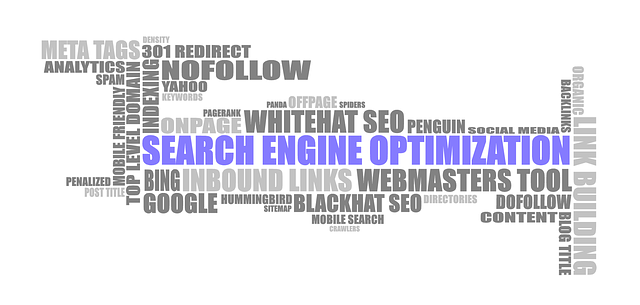A SEO audit is a comprehensive evaluation of a website's online performance and visibility, analyzing technical, on-page, and off-page elements (SWOT analysis). It identifies opportunities for optimization in areas like keyword strategy, site structure, content quality, metadata, link building, and mobile-friendliness. By using insights from tools like Google Search Console, SEMrush, Ahrefs, or Moz, businesses can make informed decisions to enhance organic traffic, search rankings, and user experience, staying competitive in the digital landscape.
A comprehensive SEO analysis is an indispensable tool for any business aiming to excel in the digital landscape. This article guides you through the intricacies of a SEO audit, from understanding its foundational principles to unlocking its full potential. We’ll explore why these assessments are critical, delve into key components, and introduce powerful tools to optimize your online presence. By following our step-by-step approach, you’ll learn to interpret results and implement strategies for enhanced search engine visibility and higher web traffic.
Understanding SEO Audit: Unveiling the Basics

A SEO audit is a meticulous evaluation process that examines every facet of a website’s visibility and performance on search engines. It’s akin to a diagnostic test for your online presence, identifying strengths, weaknesses, opportunities, and threats (SWOT analysis). By delving into technical, on-page, and off-page elements, an SEO audit provides insights crucial for enhancing search rankings and driving organic traffic.
This in-depth process involves scrutinizing key areas like keyword strategy, site structure, content quality, metadata optimization, link building profile, mobile-friendliness, and more. Understanding these components is essential to navigating the complex landscape of search engine algorithms. With a comprehensive SEO audit, businesses gain actionable insights that enable them to make informed decisions, ultimately revolutionizing their digital marketing strategies for optimal success.
Why Conduct a Comprehensive SEO Analysis?

In today’s digital era, where online visibility is paramount for businesses and organizations, conducting a comprehensive SEO analysis, or an SEO audit, is not just beneficial but crucial. It serves as a thorough examination of a website’s performance in search engine results, providing valuable insights into its strengths and weaknesses. By delving into this process, businesses can identify areas of improvement, ensuring their online presence aligns with the latest industry standards and best practices.
An SEO audit offers a strategic roadmap to enhance organic search rankings, attract more relevant traffic, and ultimately drive conversions. It involves analyzing various factors, including keyword research, on-page optimization, technical aspects like site speed and mobile responsiveness, as well as backlink profiles. This holistic approach allows for informed decision-making, enabling businesses to optimize their digital strategies and stay ahead in a competitive online landscape.
Key Components of an Effective SEO Audit

A comprehensive SEO audit is a meticulous process that involves evaluating various critical aspects of a website’s online visibility and performance. It serves as a roadmap to identify areas of improvement, ensuring the site aligns with current search engine optimization best practices. The key components of an effective SEO audit include on-page optimization, keyword research, technical SEO analysis, and link profile assessment.
On-page optimization scrutinizes content quality, meta tags, header structure, and overall user experience. Keyword research involves identifying relevant keywords and understanding searcher intent. Technical SEO analysis checks for site speed, mobile-friendliness, schema markup, and any crawlability issues. Link profile assessment evaluates backlinks to gauge authority and toxicity levels. By delving into these components, businesses can uncover hidden opportunities to boost their search engine rankings and attract more organic traffic.
Tools for a Successful SEO Assessment

A successful SEO assessment relies on a suite of robust tools designed to uncover insights and identify areas for improvement. Core components include keyword research tools, which help identify relevant keywords and analyze search volume and competition; site analytics platforms that provide in-depth data on website traffic, user behavior, and conversion rates; and backlink analysis software to assess the quality and quantity of incoming links.
Additionally, technical SEO audits using automated tools are crucial for evaluating site structure, indexing, mobile-friendliness, and page loading speeds. These tools generate reports highlighting issues such as broken links, duplicate content, and crawl errors, enabling SEO specialists to optimize website performance and enhance search engine visibility.
Step-by-Step Guide to Perform an Audit

Performing a comprehensive SEO audit is a crucial step in understanding and optimizing your website’s performance. Here’s a step-by-step guide to help you navigate this process effectively:
1. Define Your Objectives: Begin by clearly outlining what you aim to achieve with the audit. Are you looking to improve search rankings, increase organic traffic, or enhance user experience? Setting specific goals will guide your analysis and ensure a focused approach.
2. Choose the Right Tools: Select SEO auditing tools that cater to your needs. Popular options include Google Search Console, SEMrush, Ahrefs, and Moz. These tools provide insights into keyword rankings, backlink profiles, page load speeds, mobile-friendliness, and more.
3. Technical Audit: Start with a technical review of your website’s structure. Check for crawlability issues, broken links, redirect management, sitemaps, and robots.txt files. Ensure your site is secure (HTTPS) and optimized for various devices. A seamless user experience across all platforms is essential for SEO success.
4. Keyword Research: Analyze the keywords driving traffic to your site and those your competitors are targeting. Identify gaps in your keyword strategy and explore long-tail keywords with less competition but relevant search volumes.
5. On-Page Analysis: Examine individual web pages for title tags, meta descriptions, header tags, content quality, and optimization. Ensure each page is focused on a specific keyword and delivers valuable information to users. Check for proper image optimization, internal linking, and schema markup implementation.
6. Content Audit: Review your website’s content strategy. Assess its relevance, freshness, and authority. Identify areas where you can improve or expand content to cater to user intent better. A robust content strategy is a cornerstone of successful SEO.
7. Backlink Profile Analysis: Investigate the backlinks pointing to your site. Tools like Ahrefs and Moz can help identify toxic links and those with low authority. Focus on acquiring high-quality, relevant backlinks from reputable sources to boost your domain authority.
Interpreting Results and Implementing Strategies

After conducting a thorough SEO audit, interpreting the results is the next crucial step. This involves analyzing website performance, keyword rankings, backlink profiles, and user behavior to identify areas of strength and weakness. By understanding the data, businesses can make informed decisions about where to focus their efforts and resources. For instance, if the audit reveals low organic traffic, it might signal the need for an enhanced content strategy or improved on-page optimization.
Implementing strategies based on these insights is essential for SEO success. This could include optimizing meta tags, enhancing website speed, creating high-quality content, or building strategic backlinks. It’s important to set achievable goals and track progress regularly to ensure the implemented changes are effective. Continuous monitoring and adjustments will help maintain and improve search engine rankings over time.
